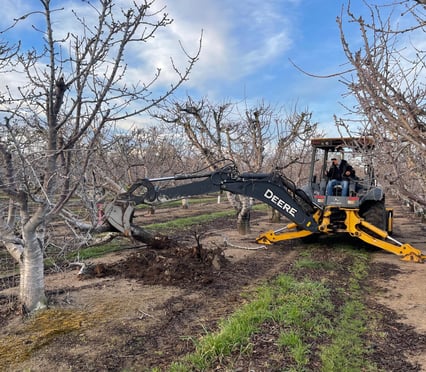Improving Nitrogen Management in Cherry Orchards


Nitrogen use efficiency
Optimizing N management in cherry orchards allows not only efficient utilization of resources but can also reduce environmental impact while increasing profitability of the farm. One of the main opportunities to optimize N fertilization is to synchronize applications with plant crop demand and apply N coincident with root uptake. Therefore, when making fertilization decisions, growers need to consider the different supplies of N, as well as the demand for N due to tree growth and especially fruit production requirements. Yield potential determines fertilizer strategy and there is a large negative impact on overall efficiency that occurs in years or orchards of poor yield in which standardized fertilization strategies are used. Therefore, fertilizing accordingly to predicted yields will dramatically enhance nutrient use efficiency.
In addition, an understanding of all different resources that will improve N use efficiency (fertilizer, compost, cover crop, manure, efficient irrigation system, etc.) and how N can be “lost” (run-off, leaching, etc.) in the orchard will help growers better make management decisions. In summary, remember to “TRAP” N in the soil:
o Time: time N application according to tree uptake patterns.
o Resources: properly manage all resources that will improve N use efficiency.
o Amount: apply the amount of N needed according to tree demand.
o Place: place N to the tree’s active root zone.
Following this principle can be viewed as a balancing act with the goal of applying adequate N to supply tree demand for growth and fruit production.
Nitrogen in cherry orchards
Nitrogen is essential for a wide range of processes in tree production. It is the major element found in the chlorophyll, which is needed for photosynthesis, the most important of all the plant processes – converting the sun’s energy into carbohydrates. In cherry orchards, almost all N inputs come from applied synthetic fertilizers but can also come from organic sources such as manure, cover crops and composts. Irrigation water may also contain significant amounts of N.
Currently, N management decisions in cherries are based on leaf analysis and critical value interpretation which only indicates a deficiency or sufficiency and is performed too late to respond to deficiencies or plan N applications. Thus, knowledge of tree internal N dynamics is important to determine the timing and amount of N supply in spring and summer.
Nitrogen demand in cherry trees
According to the study, the seasonal demand of N is high early in the season with over 95% of the total N accumulated by September in all cultivars. Nitrogen uptake rapidly occurs approximately 30 days after bloom and during fruit development, which also coincides with vegetative growth, and continues after harvest. Trees directed more pre-harvest N to fruit and more post -harvest N to vegetative growth stopping uptake during leaf senescence.
A significant amount of N accumulated in cherry trees coincided with fruit set and development. The export of N in cherries was estimated to be on average 2.6 lbs. per 1000 lbs. of fruits and biomass N accumulation was estimated to be 28 lbs. of N per acre. The study suggests that N should be available in the soil for root to uptake by cherry trees from 50% leaf out to beginning of leaf senescence and should not be applied in the soil later than 8 weeks after harvest to decrease N leaching potential. The N accumulation in a mature cherry tree is a combination of N derived from the previous season (stored N) and current season uptake from both soil and applied fertilizer.
It is important to note that all fertilization decisions will be influenced by local environment and must be adjusted accordingly. Every individual orchard must have a specific N management plan, there is no “one-size-fits-all” approach.
More information can be found at the California Cherries and CDFA websites.
Guidance to cherry tree growers on the application of nitrogen (N) has been limited, especially in relation to the amount and time of application. In recent study developed by the University of California researchers, a N management guideline was developed to deliver a more comprehensive and accurate understanding of the N use efficiency within cherry orchards. The study was performed during three growing seasons in three 15-year-old cherry orchards – “Rainier”, “Coral”, and “Bing” cultivars. The project aimed to determine the quantity and the time of highest N demand during a growing season.
Excavating cherry trees to estimate total tree biomass and nutrient content.
